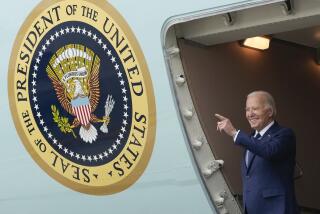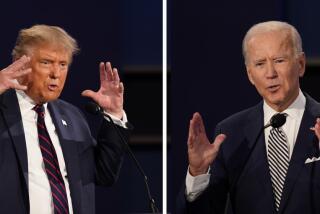Growing Field of Candidates
- Share via
I enjoyed reading Ronald Brownstein’s “Washington Outlook,” April 8. It is certainly an interesting possibility that more than four major candidates may get involved in the 1996 presidential election. However, this is not unprecedented in American history, as I think his piece implies. Twice in our history, five candidates have polled well in the general election.
In 1836, Democrat Martin Van Buren defeated three Whig candidates who ran in different sections of the country (William Henry Harrison in the Western states, Daniel Webster in New England and Hugh L. White in the Southern states). They finished as follows: Van Buren 50.9% (170 electoral votes); Harrison 36.6% (73); White 9.7% (26) and Webster 2.8% (14). The fifth candidate was Willie P. Mangum, an independent, who received no popular votes but did receive 11 electoral votes from South Carolina, which at the time cast its votes for president via the state Legislature.
In 1912, Democrat Woodrow Wilson defeated Progressive Teddy Roosevelt and Republican William H. Taft. There were two other strong “third-party” candidates that year as well--Socialist Eugene V. Debs and Prohibitionist Eugene W. Chafin. They finished as follows: Wilson 41.8% (435), Roosevelt 27.4% (88), Taft 23.2% (8), Debs 6.0% (0) and Chafin 1.4%(0). This was the only presidential election in U.S. history in which five candidates received more than 1% of the total popular vote.
Even four strong candidates would be a crowd by recent historical standards. Since 1920, there have only been two elections in which four candidates received more than 1% of the vote. Those occurred in 1948 and 1980.
BILL PRICHARD
Laguna Niguel

